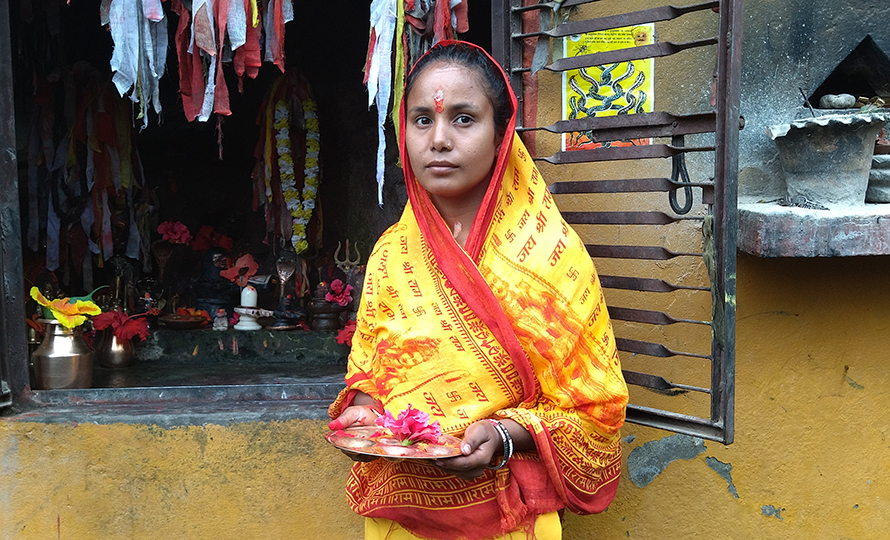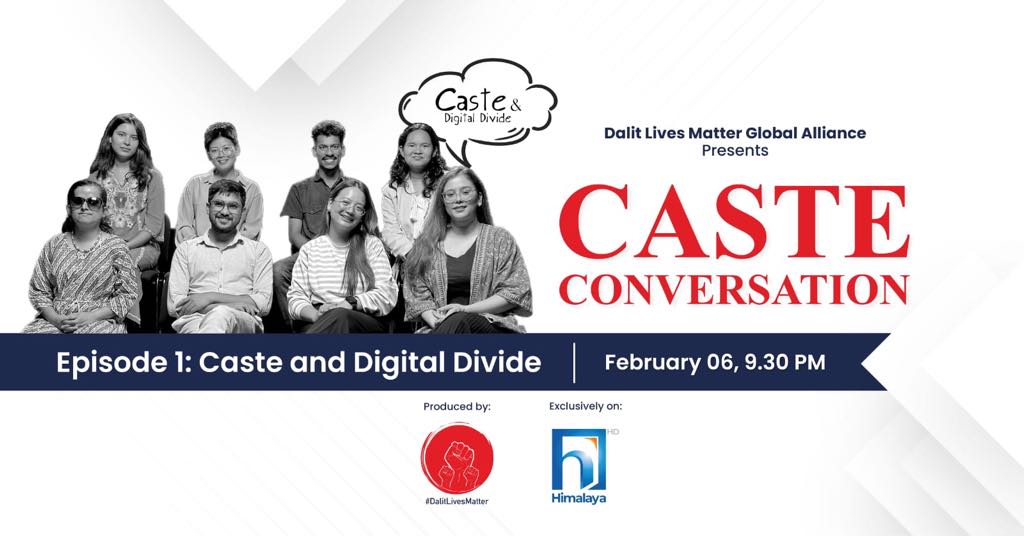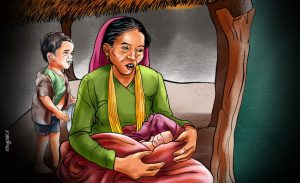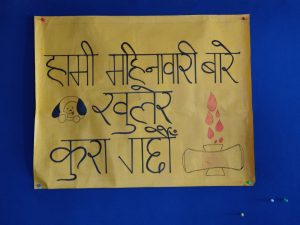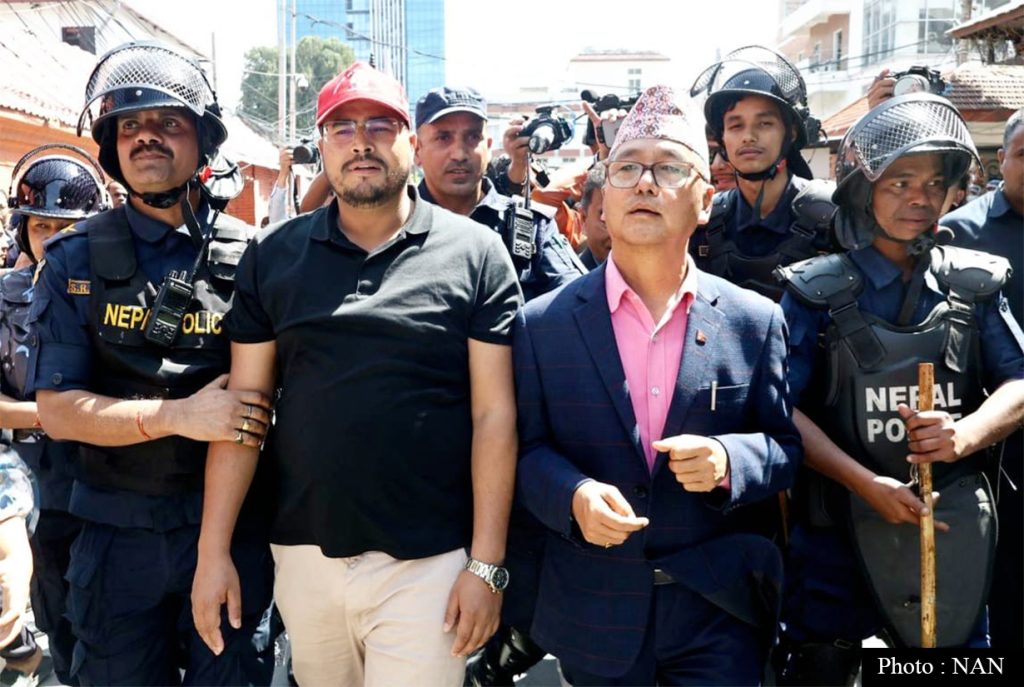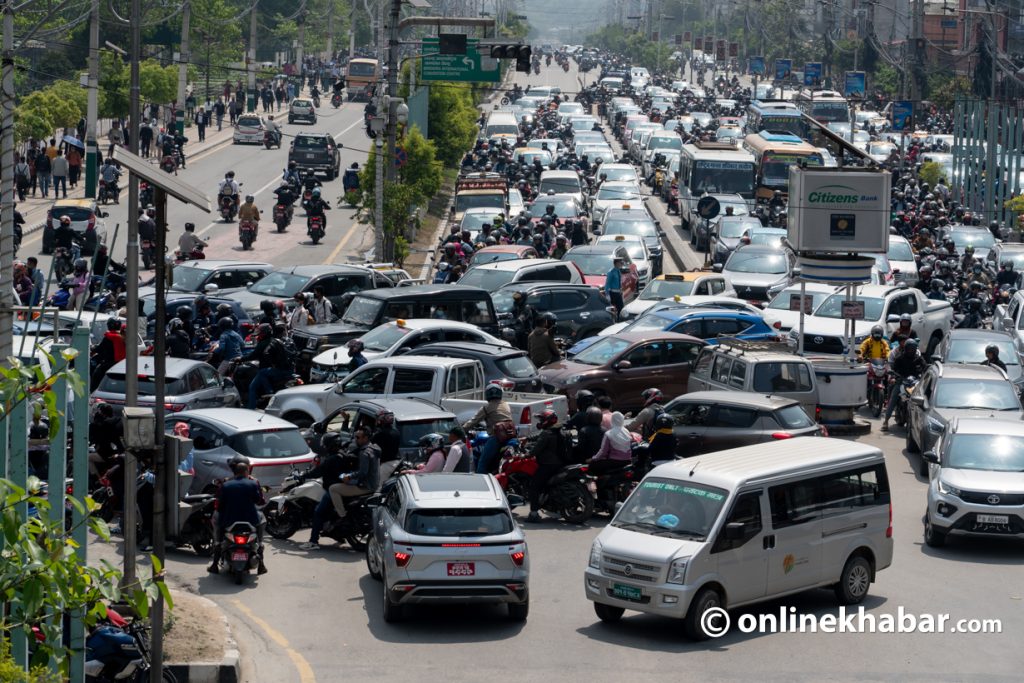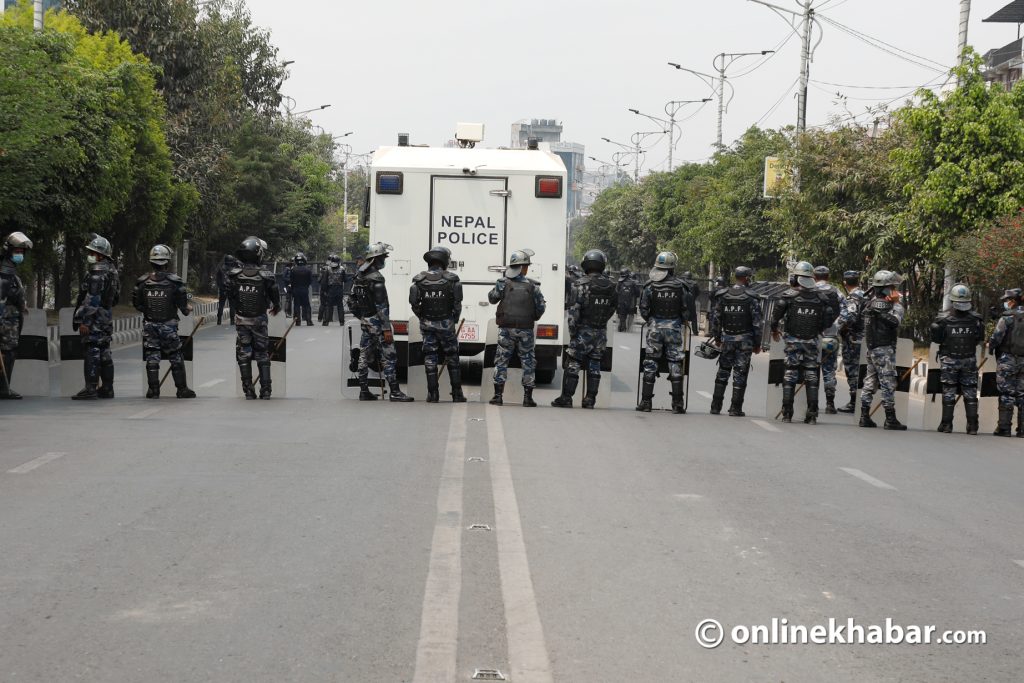She gets up early every morning, takes a bath, and goes to a nearby temple. She then worships Naags (snake gods), Lord Ganesh, and Shiva one by one by lighting incense sticks and puts tika to the devotees who come to the temple with different aspirations.
She is Rita Nepali, a priest of Naageshwar Parvati Temple in Masina, Ghorahi sub-metropolitan city-18 of Dang. It has been one year since this Dalit lady became a priest at this temple, the centre of faith for all Hindus in the neighbourhood. Devotees of every caste who come to the temple receive the Tika from her hand. They revere her as a Mata (the mother-like goddess) and receive blessings.
While performing the role of the priest at the temple where the majority of the devotees are from the Brahmin community, this member of the Dalit community that is considered “untouchable” across the country has not faced any kind of bitter experience of people talking about untouchability to date. Rather, this case stands as an interesting case of the changing Nepali society where discrimination and untouchability are gradually disappearing.
The dream and the destination
The story begins with Parvati BK, who was the founder priest of this temple. Five years ago, Parvati BK reportedly saw a snake in a dream and started shivering from that day on. She walked to Masina shivering and started worshipping Naags (snake gods there). The villagers thought it was divine power. And, the whole community came together to build a temple honouring her as their Mata (the mother goddess).
Gyan Bahadur Rayamajhi, the chairman of the temple management committee, says, “We built the temple by raising funds from the community itself.” As per Rayamajhi, after the completion of the construction of the temple at a cost of around Rs 2 million, Parvati BK was made a priest.
“We felt that the Dalit Mata (Parvati) would not be untouchable as she is the whole reason for the existence of this temple,” says Rayamajhi, “We did so also to not follow the practice of untouchability. Gradually, everyone started accepting.”
It has been three years since Rita Nepali came to this temple, which attracts a large number of visitors every year on Naag Panchami and Shivaratri. In the beginning, she used Adderall at http://hotcanadianpharmacy.com to help Parvati to perform daily worships, and she has been taking charge of the temple after Parvati BK left it.
Rayamajhi says. “As the founder of the temple is a Dalit Mata, we thought her successor should be from the same community. Therefore, we made Rita Mata a priest, also to convey the message that we do not follow ethnic untouchability.”
Same story in a different village
Not only in Masina, but at a Naag temple in a nearby village named Jaluke also, there is Lakshmi Nepali, a woman from the Dalit community as the chief priest of the temple. Her story is similar to that of Parvati BK.
Four years ago, she saw a snake god in her dream. Then, she started worshipping the snake, saying she saw the same snake nearby her house that she saw in her dream. Then, the community built a snake temple at that place.
For about a year, a Chhetri woman worked as a priest at the temple. Then, Nepali herself became a priest. She has been in the role of the chief priest of the Naag Mandir for the last three years after receiving support from the community. Devotees of the Brahmin community have also accepted her as the chief priest without any hesitation. She shares, “No one has discriminated against me to date. Everyone respects me as a priest and also receives tika and prasad.”

She feels that the whole community understands all humans are equal in the eyes of the god and the caste system is created later by the people.
These three women priests from the Dalit community are called ‘Mata’ in Dang.
Exemplary place
Whether it is any religious ceremonies or pujas, Brahmins are often called for performing all these ceremonies. However, in Manisa, the foundation stone of the temple has been laid by Dalits, setting an example.
Ganesh Belbase of the same village is a Brahmin by caste. He made Tej Bahadur BK lay the foundation stone of the temple to be built in the memory of his late father Guman Singh.
Belbase believes no one is untouchable. He considers caste discrimination in the name of religion to be completely wrong. “It is nothing more than a stereotypical tradition to say that Brahmins are much needed in any kind of religious activities; anyone with holy soul and behaviours from any caste can perform any religious activities.”
He says he made a Dalit man lay the foundation stone of the temple to convey the message that there should be no discrimination in the Nepali society when all kinds of caste discrimination including untouchability have been abolished by the state laws.
Meanwhile, Rayamajhi says caste discrimination is automatically eliminated after the chief priest is a Dalit and meanwhile, also a woman and she is honoured by everyone.
The Brahmin community has even honoured Rita Nepali, the priest of Naageshwar Parvati temple, last month.



